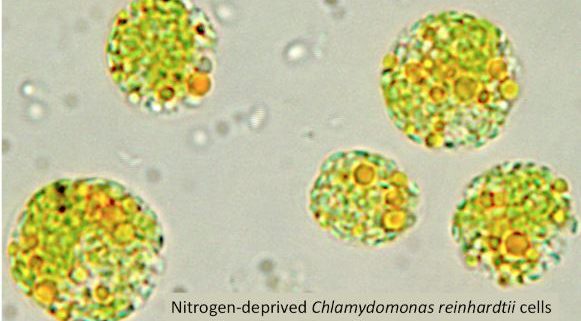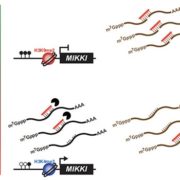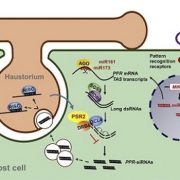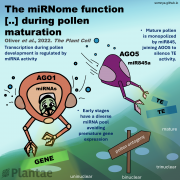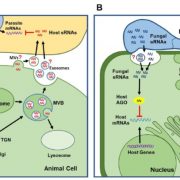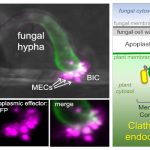Small RNAs and nutrient deprivation in Chlamydomonas
Li et al. find a class of small RNAs that might affect algal tolerance to nutritional stress.
Yingshan Li and Heriberto Cerutti – School of Biological Sciences and Center for Plant Science Innovation, University of Nebraska-Lincoln, NE 68588-0666, USA
Background: Noncoding RNAs are not translated into proteins. However, many play key roles in various biological processes. In eukaryotes, small RNAs can bind to matching messenger RNAs (mRNAs) and trigger their degradation or shut down their translation into proteins, a phenomenon called RNA interference. These small RNAs associate with Argonaute (AGO) proteins and regulate the expression of protein-coding genes. Other kinds of small RNAs help fight viruses and transposons. Generally, all these types of small RNAs are produced by cleaving longer double-stranded RNAs via Dicer ribonucleases. Indeed, in many organisms, diverse Dicer-dependent small RNAs affect growth, development and disease tolerance.
Question: We wanted to characterize the small RNAs functioning in the single-cell alga Chlamydomonas reinhardtii. This green alga lives in many different environments throughout the world and has become a valuable model for biological research.
Findings: Chlamydomonas reinhardtii contains a class of small RNAs (greater than 26 nucleotides in length) that associates preferentially with a specific Argonaute protein named AGO1. These small RNAs are atypical since they do not require Dicer enzymes for their production. They are derived from moderately repetitive, transposon-like sequences conserved in related Chlamydomonas species. Interestingly, the abundance of these small RNAs increased substantially in cells subject to nitrogen or sulfur deprivation, simultaneously with the downregulation of predicted target mRNAs. We postulate that this class of small RNAs might have a role in algal tolerance to nutritional stress.
Next steps: We would like to find out how these small RNAs may help the alga cope with nitrogen or sulfur deprivation and the molecular mechanism(s) by which they may regulate gene expression. This information may be helpful for improving nutrient use efficiency in crops.
Reference:
Yingshan Li, Eun-Jeong Kim, Adam Voshall, Etsuko N. Moriyama, and Heriberto Cerutti (2023) Small RNAs >26 nt in length associate with AGO1 and are upregulated by nutrient deprivation in the alga Chlamydomonas. https://doi.org/10.1093/plcell/koad093


